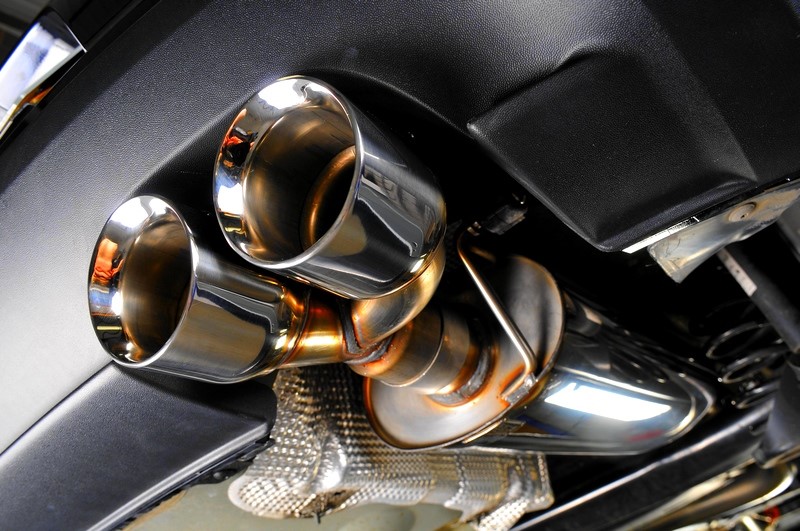Understanding how automotive batteries are classified under hazardous materials regulations is essential for safe transportation, storage, and disposal. Whether you’re a vehicle owner, mechanic, shipping manager, or environmental officer, recognizing the hazard class of automotive batteries can prevent accidents, reduce environmental risks, and ensure regulatory compliance.
In this comprehensive guide, we’ll explore the hazard classification of automotive batteries, related regulations, safety handling tips, transportation requirements, emergency protocols, industry-specific practices, and frequently asked questions.
Contents
- 1 What Are Automotive Batteries?
- 2 Automotive Batteries Are an Example of Which Hazard Class?
- 3 Why Are Automotive Batteries Classified as Hazardous Materials?
- 4 Understanding the DOT and UN Classification System
- 5 Labeling Requirements for Automotive Batteries
- 6 Packaging Standards for Safe Transport
- 7 Transportation Guidelines for Automotive Batteries
- 8 Industry-Specific Compliance Practices
- 9 Environmental Concerns and Disposal Safety
- 10 Workplace Safety Tips for Automotive Batteries
- 11 Emergency Response for Battery Spills or Fires
- 12 Regulatory Bodies and Compliance Guidelines
- 13 Real-World Examples of Battery-Related Hazards
- 14 FAQs – Automotive Battery Hazard Class
- 14.1 Are all automotive batteries considered hazardous materials?
- 14.2 What hazard class is a lead-acid battery?
- 14.3 What hazard class is a lithium-ion battery?
- 14.4 Do all batteries require special labeling for transport?
- 14.5 Can automotive batteries be shipped internationally?
- 14.6 How should damaged batteries be handled?
- 14.7 Can I throw a car battery in the trash?
- 14.8 Do battery retailers need HAZMAT training?
- 14.9 What happens if I transport automotive batteries without proper classification?
- 14.10 What safety equipment is required when handling batteries?
- 15 Conclusion
What Are Automotive Batteries?
Automotive batteries, commonly referred to as car batteries, are electrochemical storage devices that supply electrical energy to start engines and power electrical systems in vehicles. The most common types include:
- Lead-acid batteries (Flooded, AGM, Gel)
- Lithium-ion batteries (increasingly used in electric vehicles)
- Nickel-metal hydride (NiMH) batteries (less common, used in some hybrids)
Each battery type contains chemicals and components that can pose hazards to human health and the environment, which is why proper classification is vital.
Automotive Batteries Are an Example of Which Hazard Class?
Automotive batteries typically fall under Hazard Class 8: Corrosive Substances or Hazard Class 9: Miscellaneous Dangerous Goods, depending on their chemical composition.
1. Lead-Acid Batteries – Hazard Class 8
Lead-acid batteries are classified as Class 8: Corrosive substances because they contain sulfuric acid, a highly corrosive liquid that can cause severe burns, emit hazardous fumes, and damage materials upon contact.
- UN Number: UN2794 (Wet, filled with acid)
- Packing Group: III (for less severe corrosive risk)
- Labeling: Corrosive (Class 8), with proper handling instructions
2. Lithium-Ion Batteries – Hazard Class 9
Lithium-ion batteries are more commonly classified under Class 9: Miscellaneous Dangerous Goods due to the potential for thermal runaway, fires, and toxic gas release.
- UN Number: UN3480 (Lithium-ion batteries), UN3481 (contained in equipment)
- Packing Group: Not assigned, but subject to strict transport rules
- Labeling: Miscellaneous (Class 9), with specific handling and shipping standards
3. Other Battery Types and Their Hazard Implications
- Nickel-metal hydride (NiMH) batteries are generally not regulated as hazardous unless transported in bulk or under specific conditions.
Why Are Automotive Batteries Classified as Hazardous Materials?
Batteries are considered hazardous because they may:
- Contain corrosive chemicals (e.g., sulfuric acid)
- Have flammable or reactive properties (especially lithium-based)
- Generate toxic fumes under certain conditions
- Pose fire, explosion, or environmental risks if mishandled
Proper classification ensures that these risks are mitigated through safe storage, transport, labeling, and disposal.
Understanding the DOT and UN Classification System
The U.S. Department of Transportation (DOT) and international regulations follow a harmonized system based on the UN Model Regulations on the Transport of Dangerous Goods.
Key Classification Criteria:
- Chemical properties (acidic, flammable, reactive)
- Physical state (liquid, solid, gas)
- Packaging and containment
- Potential hazards during transportation
Importance of Proper Classification:
- Ensures compliance with regulations
- Reduces risk of environmental contamination
- Prevents workplace accidents and injuries
Labeling Requirements for Automotive Batteries
Proper labeling is critical when transporting or storing automotive batteries. The label indicates the hazard class, UN number, and handling instructions.
For Lead-Acid Batteries:
- Label: Class 8 – Corrosive
- Markings: UN2794, orientation arrows, handling instructions
- Placards: Required for bulk shipments
For Lithium-Ion Batteries:
- Label: Class 9 – Miscellaneous
- Markings: UN3480 or UN3481, battery warning label
- Placards: Required if exceeding certain weight thresholds
Packaging Standards for Safe Transport
Requirements for Lead-Acid Batteries:
- Leak-proof containers
- Corrosion-resistant material
- Secure bracing to avoid tipping
Requirements for Lithium-Ion Batteries:
- Shock-resistant packaging
- Short-circuit protection (non-conductive caps, tape)
- UN-approved containers
Transportation Guidelines for Automotive Batteries
1. Use Approved Packaging
- Strong outer packaging
- Acid-resistant lining (for lead-acid)
- Short-circuit protection (for lithium-ion)
2. Comply with Carrier and Mode Regulations
- Ground: DOT rules under 49 CFR
- Air: IATA Dangerous Goods Regulations
- Sea: IMDG Code
3. Training and Documentation
- Proper HAZMAT training for handlers
- Shipping papers and declarations
- Emergency contact information
Industry-Specific Compliance Practices
Automotive Repair Shops
- Battery storage cabinets with ventilation
- Secondary containment trays
- PPE for technicians
Auto Parts Retailers
- Return/recycle policies
- Hazard communication standards
- Transport training for delivery staff
EV Manufacturers
- Strict lithium-ion protocols
- Compliance with UN38.3 test requirements
- On-site fire safety measures
Environmental Concerns and Disposal Safety
Improper disposal of automotive batteries can contaminate soil, water, and air. Here’s how to stay compliant and eco-friendly:
Lead-Acid Battery Disposal:
- Recycle at certified battery collection centers
- Never discard in regular trash
- Follow EPA guidelines
Lithium-Ion Battery Disposal:
- Store in cool, dry place until recycling
- Use fireproof containers for damaged batteries
- Recycle through certified e-waste programs
Workplace Safety Tips for Automotive Batteries
PPE and Equipment:
- Wear chemical-resistant gloves, goggles, and aprons
- Use non-sparking tools
Storage Tips:
- Store upright in ventilated areas
- Avoid extreme temperatures
- Separate different battery types
Emergency Measures:
- Have spill kits and neutralizing agents nearby
- Train staff in battery-related emergency response
- Keep SDS (Safety Data Sheets) available
Emergency Response for Battery Spills or Fires
Lead-Acid Battery Leaks:
- Contain with absorbent material
- Neutralize acid with baking soda or lime
- Ventilate the area
Lithium-Ion Battery Fires:
- Use Class D fire extinguishers
- Do not use water or CO2
- Evacuate and call emergency services
Regulatory Bodies and Compliance Guidelines
Several national and international bodies govern battery classification and handling:
- U.S. DOT (Department of Transportation)
- OSHA (Occupational Safety and Health Administration)
- EPA (Environmental Protection Agency)
- IATA (International Air Transport Association)
- IMDG (International Maritime Dangerous Goods Code)
- UN Subcommittee of Experts on Hazardous Material Transportation
Staying updated with these regulations is essential for businesses dealing with automotive batteries.
Real-World Examples of Battery-Related Hazards
- Shipping Fire: In 2010, a shipment of lithium-ion batteries caused a cargo plane fire, prompting stricter air transport rules.
- Corrosive Leaks: Inadequate storage of lead-acid batteries resulted in serious sulphuric acid burns at a Michigan warehouse.
- Improper Disposal Fines: A major auto retailer was fined $200,000 for improper battery disposal and environmental violations.
These incidents highlight the importance of proper classification and safety measures.
FAQs – Automotive Battery Hazard Class
Are all automotive batteries considered hazardous materials?
Most are, especially lead-acid and lithium-ion batteries, due to their corrosive or reactive components.
What hazard class is a lead-acid battery?
Lead-acid batteries are classified under Hazard Class 8 – Corrosive Substances.
What hazard class is a lithium-ion battery?
Lithium-ion batteries are classified as miscellaneous dangerous goods, or Hazard Class 9.
Do all batteries require special labeling for transport?
Yes, especially if transported by air, sea, or in bulk, according to DOT, IATA, and IMDG regulations.
Can automotive batteries be shipped internationally?
Yes, but they must meet international regulations including proper labeling, packaging, and documentation.
How should damaged batteries be handled?
Damaged batteries should be isolated, stored in non-reactive containers, and disposed of at hazardous waste facilities.
Can I throw a car battery in the trash?
No. It must be recycled at authorized facilities.
Do battery retailers need HAZMAT training?
Yes, employees handling shipping or large-scale storage must be trained per DOT or OSHA regulations.
What happens if I transport automotive batteries without proper classification?
You may face fines, shipment rejection, or legal action for non-compliance with HAZMAT laws.
What safety equipment is required when handling batteries?
At a minimum: gloves, goggles, aprons, neutralizing agents, fire extinguishers, and spill kits.
Conclusion
To summarize, automotive batteries are an example of Hazard Class 8 or Hazard Class 9, depending on their chemical makeup. Lead-acid batteries fall under Class 8 (corrosive), while lithium-ion batteries are under Class 9 (miscellaneous dangerous goods). Understanding these classifications is not just about regulatory compliance—it’s a critical part of ensuring workplace safety, environmental protection, and responsible transport.
Whether you’re a consumer or a business professional, use this guide to make informed decisions about handling, shipping, storing, or disposing of automotive batteries in a safe and legally compliant manner.

Harper Leigh is a dedicated writer at hsnime.co.uk, where she crafts engaging and insightful content on a wide range of topics. With a passion for storytelling and connecting with readers, Harper aims to inspire, inform, and entertain through her articles.






